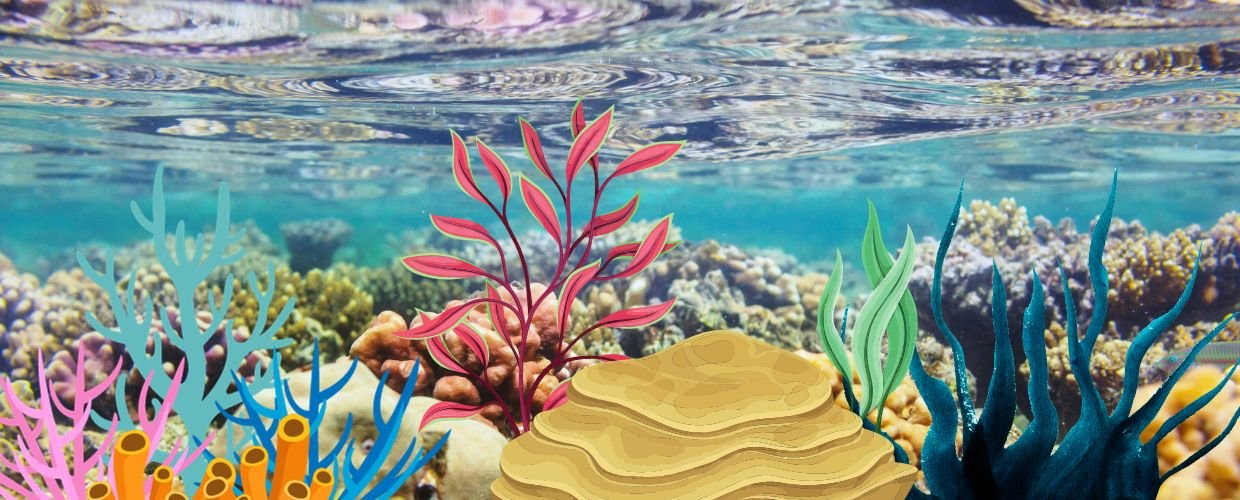Deep-sea corals, mysterious and awe-inspiring, thrive in the ocean’s darkest and most remote corners, far from the sun’s reach. In this comprehensive exploration, we will unveil the world of deep-sea corals, shedding light on their unique characteristics, ecological significance, and the challenges they face in the depths of the abyssal realm. These enigmatic organisms, often overshadowed by their shallow-water counterparts, play a vital role in the marine ecosystem and provide a glimpse into the resilience and adaptability of life in Earth’s most extreme environments.
The Significance of Deep-Sea Corals
Though hidden from view, deep-sea corals are of immense importance to our understanding of the oceans and their role in the global ecosystem.
Biodiversity Hotspots
Deep-sea corals create thriving oases of biodiversity in the deep ocean. Their complex structures offer refuge and sustenance to many species, many of which are found nowhere else on Earth. These corals, known as “cold-water corals,” provide a habitat for various marine life, including fish, crustaceans, and invertebrates.
Climate Archive
Deep-sea corals are nature’s historians. They can live for centuries, and their calcium carbonate skeletons contain information about past ocean conditions. By studying the growth rings of these corals, scientists can reconstruct climate data, including sea surface temperatures and ocean circulation patterns, dating back hundreds of years.
Carbon Sinks
Deep-sea corals play a crucial role in sequestering carbon dioxide from the atmosphere. They remove carbon from the water as they grow, effectively acting as carbon sinks. This process helps mitigate the impacts of ocean acidification and contributes to the overall regulation of Earth’s climate.
Types of Deep-Sea Corals
Deep-sea corals encompass a diverse array of species, each adapted to specific conditions in the abyssal depths.
Octocorals and Hexacorals
Deep-sea corals are broadly categorized into two groups: octocorals, which have eight-fold symmetry, and hexacorals, which have six-fold symmetry. Octocorals include sea fans and sea pens, while hexacorals encompass stony corals. Each group exhibits unique adaptations to the extreme conditions of the deep sea.
Black Corals and Bamboo Corals
Within the octocoral group, black corals and bamboo corals are standout examples. Black corals are known for their dark, tree-like structures, while bamboo corals resemble slender, bamboo-like stalks. Both types of corals thrive in deep-sea habitats and contribute to the biodiversity of these ecosystems.
Challenges and Conservation
Deep-sea corals face numerous challenges, including habitat destruction, climate change, and fishing practices. Protecting these delicate ecosystems is critical for preserving the biodiversity of the abyssal realm.
Bottom Trawling and Deep-Sea Mining
Bottom trawling, a fishing practice that involves dragging heavy nets along the seafloor, poses a significant threat to deep-sea corals. These corals are often destroyed or damaged as bycatch. Furthermore, the emerging deep-sea mining industry for minerals such as polymetallic nodules and rare earth elements poses additional risks to these fragile ecosystems.
Ocean Acidification
Ocean acidification, driven by increased atmospheric carbon dioxide levels, can harm deep-sea corals by weakening their calcium carbonate skeletons. As the ocean becomes more acidic, the ability of these corals to build and maintain their structures is compromised, making them more vulnerable to physical disturbances.
Climate Change
Climate change affects the deep-sea environment by altering ocean temperatures and circulation patterns. Changes in these conditions can disrupt the delicate balance of deep-sea ecosystems and impact the health and survival of corals and the species that depend on them.
Conservation Efforts
Efforts to conserve deep-sea corals are crucial for safeguarding the biodiversity and ecological functions of the abyssal realm.
Marine Protected Areas
Marine protected areas (MPAs) have been established in various regions to protect deep-sea coral ecosystems from destructive fishing practices. These protected zones provide a haven for corals and associated species to thrive.
Sustainable Fishing Practices
Adopting sustainable fishing practices that minimize bycatch and avoid areas with deep-sea corals is essential for protecting these delicate ecosystems. Implementing remotely operated vehicles (ROVs) and autonomous underwater vehicles (AUVs) can help identify and map deep-sea coral habitats, reducing the risk of accidental damage during fishing activities.
Scientific Research and Exploration
Scientific research and exploration of deep-sea coral ecosystems are critical for understanding their ecology, biology, and responses to environmental change. Ongoing research informs conservation strategies and enhances our knowledge of these mysterious habitats.
Conclusion
Deep-sea corals, hidden treasures of the abyssal realm, provide invaluable insights into the resilience and complexity of life in Earth’s most extreme environments. Their significance as biodiversity hotspots, climate archives, and carbon sinks underscores their critical role in the marine ecosystem and the global environment. As we unveil the mysteries of the deep and confront the challenges of habitat destruction, climate change, and fishing practices, we must prioritize the conservation of deep-sea corals.
Protecting these ecosystems is a testament to our commitment to preserving the wonders of the ocean and a recognition of the interconnectedness of all life on Earth. Deep-sea corals, guardians of the abyss, inspire us to explore, understand, and protect the precious ecosystems that sustain our planet.












